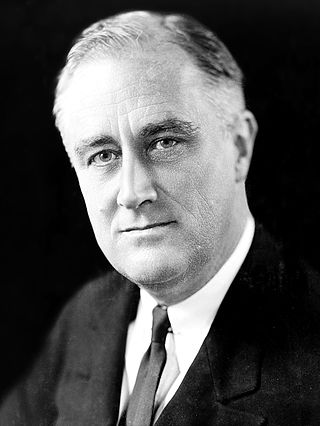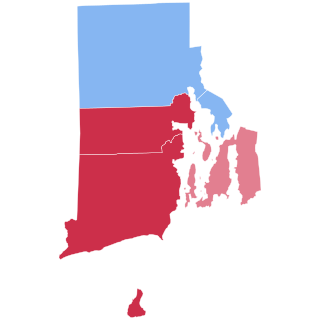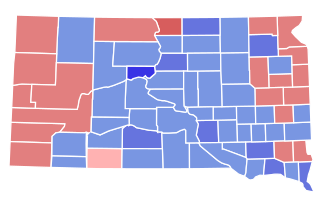| |||||||||||||||||
| |||||||||||||||||
Noel: 50–60% 60–70% DeSimone: 40–50% 50–60% | |||||||||||||||||
| |||||||||||||||||
The 1972 Rhode Island gubernatorial election was held on November 7, 1972. Democratic nominee Philip Noel defeated Republican nominee Herbert F. DeSimone with 52.55% of the vote.
| |||||||||||||||||
| |||||||||||||||||
Noel: 50–60% 60–70% DeSimone: 40–50% 50–60% | |||||||||||||||||
| |||||||||||||||||
| Elections in Rhode Island |
|---|
 |
The 1972 Rhode Island gubernatorial election was held on November 7, 1972. Democratic nominee Philip Noel defeated Republican nominee Herbert F. DeSimone with 52.55% of the vote.
Major party candidates
Other candidates
| Party | Candidate | Votes | % | ±% | |
|---|---|---|---|---|---|
| Democratic | Philip Noel | 216,953 | 52.55% | ||
| Republican | Herbert F. DeSimone | 194,315 | 47.07% | ||
| Independent | Adam J. Varone | 1,597 | 0.39% | ||
| Majority | 22,638 | ||||
| Turnout | 412,866 | ||||
| Democratic hold | Swing | ||||

The 1932 United States presidential election was the 37th quadrennial presidential election, held on Tuesday, November 8, 1932. The election took place against the backdrop of the Great Depression. The incumbent Republican President Herbert Hoover was defeated in a landslide by Democrat Franklin D. Roosevelt, the governor of New York and the vice presidential nominee of the 1920 presidential election. Roosevelt was the first Democrat in 80 years to simultaneously win an outright majority of the electoral college and popular vote, a feat last accomplished by Franklin Pierce in 1852, as well as the first Democrat in 56 years to win a majority of the popular vote, which was last done by Samuel J. Tilden in 1876. Roosevelt was the last sitting governor to be elected president until Bill Clinton in 1992. Hoover was the last incumbent to lose an election to another term until Gerald Ford lost 44 years later. The election marked the effective end of the Fourth Party System, which had been dominated by Republicans. It was the first time since 1916 that a Democrat was elected president. Despite disastrous economic conditions due to the Great Depression, Hoover faced little opposition at the 1932 Republican National Convention. Roosevelt was widely considered the front-runner at the start of the 1932 Democratic National Convention, but was not able to clinch the nomination until the fourth ballot of the convention. The Democratic convention chose a leading Southern Democrat, Speaker of the House John Nance Garner of Texas, as the party's vice presidential nominee. Roosevelt united the party, campaigning on the failures of the Hoover administration. He promised recovery with a "New Deal" for the American people.
The Progressive Party was a political party created as a vehicle for Robert M. La Follette, Sr. to run for president in the 1924 election. It did not run candidates for other offices, and it disappeared after the election. The party advocated progressive positions such as government ownership of railroads and electric utilities, cheap credit for farmers, the outlawing of child labor, stronger laws to help labor unions, more protection of civil liberties, an end to American imperialism in Latin America, and a referendum before any president could lead the nation into war.

The 1932 United States presidential election in Massachusetts took place on November 8, 1932, as part of the 1932 United States presidential election, which was held throughout all contemporary 48 states. Voters chose 17 representatives, or electors to the Electoral College, who voted for president and vice president.

The 1928 United States presidential election in Massachusetts took place on November 6, 1928, as part of the 1928 United States presidential election, which was held throughout all contemporary 48 states. Voters chose 18 representatives, or electors to the Electoral College, who voted for president and vice president.
Herbert F. DeSimone was an American lawyer and politician from Rhode Island. He served as the 64th Attorney General of Rhode Island and as President Nixon's Assistant Secretary of Transportation for the Environment and Urban System.
John J. DeSimone is an American politician, a former Democratic member of the Rhode Island House of Representatives who represented House District 6 from January 1993 until January 2003 and District 5 from January 2003 to January 2017. DeSimone was narrowly defeated in the 2016 Democratic primary by progressive candidate Marcia Ranglin-Vassell, ending his 24 year tenure in the General Assembly.

The 1928 United States presidential election in Rhode Island took place on November 6, 1928, as part of the 1928 United States presidential election which was held throughout all contemporary 48 states. Voters chose five representatives, or electors to the Electoral College, who voted for president and vice president.

The 1976 North Carolina gubernatorial election was held on November 2, 1976. Democratic nominee Jim Hunt defeated Republican nominee David T. Flaherty with 64.99% of the vote.

The 1972 North Carolina gubernatorial election was held on November 7, 1972. Republican nominee James Holshouser defeated Democratic nominee Skipper Bowles with 51% of the vote. Holshouser thus became the first Republican elected governor of the state since 1896.

The 1974 Rhode Island gubernatorial election was held on November 5, 1974. Incumbent Democrat Philip Noel defeated Republican nominee James W. Nugent with 78.48% of the vote.

The 1970 Rhode Island gubernatorial election was held on November 3, 1970. Incumbent Democrat Frank Licht narrowly defeated Republican nominee Herbert F. DeSimone with 50.07% of the vote.

The 1932 North Dakota gubernatorial election was held on November 8, 1932. Republican nominee William Langer defeated Democratic nominee Herbert C. DePuy with 54.75% of the vote.

The 1972 Delaware gubernatorial election was held on November 7, 1972. Democratic nominee Sherman W. Tribbitt defeated incumbent Republican Governor Russell W. Peterson with 51.27% of the vote. This was the last time a Democrat won statewide office in Delaware until 1992, when Tom Carper won the gubernatorial election over Republican B. Gary Scott.

The 1948 New Hampshire gubernatorial election was held on November 2, 1948. Republican nominee Sherman Adams defeated Democratic nominee Herbert W. Hill with 52.21% of the vote.

The 1928 North Carolina gubernatorial election was held on November 6, 1928. Democratic nominee O. Max Gardner defeated Republican nominee Herbert F. Seawell, with just over 55% of the vote. This was, relatively, a close election for the time in North Carolina, with Gardner receiving the smallest percentage of the vote that any Democratic gubernatorial nominee won between 1900 and 1956. The result came against the backdrop of divisions in the state Democratic Party over the controversial nomination of Alfred E. Smith for president. Gardner supported Smith, who lost the state to Herbert Hoover.

The 1886 Connecticut gubernatorial election was held on November 2, 1886. Republican nominee Phineas C. Lounsbury defeated Democratic nominee Edward S. Cleveland with 46.19% of the vote.

The 1896 Indiana gubernatorial election was held on November 3, 1896. Republican nominee James A. Mount defeated Democratic nominee Benjamin F. Shively with 50.93% of the vote.

The 1962 California lieutenant gubernatorial election was held on November 6, 1962. Democratic incumbent Glenn M. Anderson narrowly defeated Republican nominee George Christopher with 51.42% of the vote.

The 1928 South Dakota gubernatorial election was held on November 6, 1928. Incumbent Democratic Governor William J. Bulow ran for re-election to a second term. In the general election, he faced Attorney General Buell F. Jones, the Republican nominee. Despite Republican presidential nominee Herbert Hoover overwhelmingly defeating Democratic nominee Al Smith overwhelmingly in South Dakota, Bulow defeated Jones by a decisive margin to retain the governorship. In so doing, he became the first Democratic candidate for Governor to receive a majority of the vote in the state's history.

The 1976 North Carolina lieutenant gubernatorial election was held on November 2, 1976. Democratic nominee James C. Green defeated Republican nominee William S. Hiatt with 66.04% of the vote.